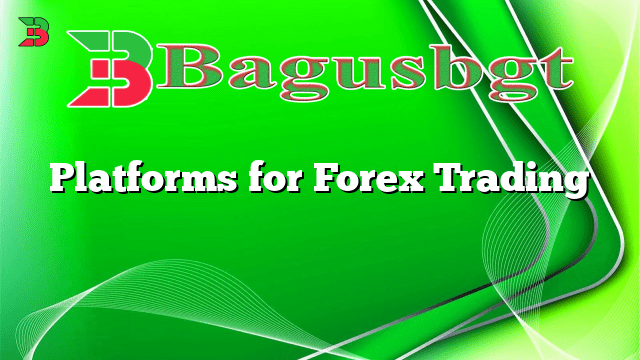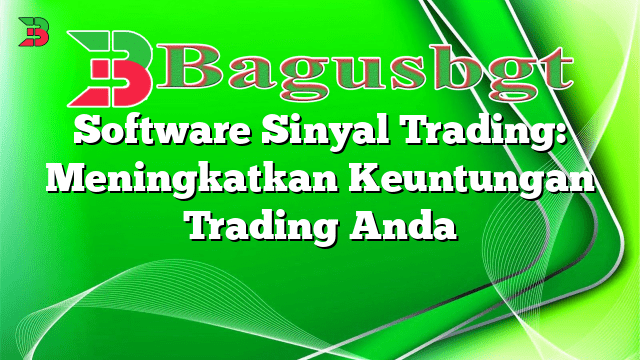Hello readers, welcome to our comprehensive guide on platforms for forex trading. In this article, we will explore various platforms available for traders to engage in the exciting world of forex trading. We will discuss their features, advantages, disadvantages, and provide alternative options for those looking for a different trading experience.
1. MetaTrader 4 (MT4)
MetaTrader 4, commonly known as MT4, is a widely used platform in the forex trading industry. It offers a user-friendly interface, advanced charting tools, and a wide range of technical indicators. Traders can execute trades, analyze market trends, and develop automated trading strategies using its built-in programming language, MQL4.
Advantages:
- Extensive community support and a vast selection of free and paid indicators and expert advisors.
- Compatibility with various operating systems, including Windows, Mac, iOS, and Android.
- Ability to execute multiple trades simultaneously and utilize various order types.
Disadvantages:
- Can be overwhelming for beginners due to its numerous features and customization options.
- Requires a stable internet connection to avoid potential disruptions during trading.
- Limited access to other financial markets, as MT4 primarily focuses on forex trading.
2. MetaTrader 5 (MT5)
Serving as an upgraded version of MT4, MetaTrader 5 (MT5) offers an enhanced trading experience. It provides more advanced features, additional timeframes, and the ability to trade various asset classes, including stocks and commodities.
Advantages:
- Improved backtesting capabilities and advanced order management.
- Increased number of technical indicators and charting tools for in-depth market analysis.
- Access to a wider range of financial instruments, allowing traders to diversify their portfolios.
Disadvantages:
- Less community support and a smaller selection of compatible indicators and expert advisors compared to MT4.
- Not all brokers offer MT5, limiting the availability of this platform.
- Similar to MT4, it might be overwhelming for beginners due to its advanced features.
3. cTrader
cTrader is a popular forex trading platform known for its advanced trading capabilities and fast execution speeds. It offers a clean and intuitive interface, comprehensive charting tools, and a wide range of order types.
Advantages:
- Transparent pricing and direct market access, providing a level playing field for all traders.
- Advanced order management with features like market depth and partial fills.
- Ability to create and backtest custom indicators and trading algorithms using C# programming language.
Disadvantages:
- Requires a certain level of technical expertise to fully utilize its features.
- Limited availability of cTrader compared to MT4 and MT5.
- Smaller community compared to MetaTrader platforms, resulting in fewer resources and support.
4. NinjaTrader
NinjaTrader is a platform mainly used by advanced traders and professionals. It offers advanced charting capabilities, customizable workspaces, and a wide range of technical analysis tools.
Advantages:
- Advanced order types and superb trade management features.
- Access to a vast library of custom indicators and trading strategies.
- Ability to execute trades directly from charts.
Disadvantages:
- Not beginner-friendly, as it requires a steep learning curve.
- Limited availability for Mac and mobile users, as NinjaTrader primarily supports Windows operating system.
- Expensive pricing structure, including data fees and platform licenses.
5. Alternative Options
If you are looking for alternative options beyond the platforms mentioned above, there are several other platforms worth considering:
- ProRealTime: Offers advanced charting features and a wide range of technical analysis tools.
- TradeStation: Known for its powerful scanning and backtesting capabilities.
- cAlgo: A platform specifically designed for algorithmic trading on the cTrader ecosystem.
Comparison Table
Platform |
Advantages |
Disadvantages |
|---|---|---|
MetaTrader 4 (MT4) |
Extensive community support, cross-platform compatibility |
Overwhelming for beginners, limited access to other markets |
MetaTrader 5 (MT5) |
Advanced features, access to multiple asset classes |
Less community support, limited availability |
cTrader |
Transparent pricing, advanced order management |
Requires technical expertise, limited availability |
NinjaTrader |
Advanced order types, extensive customizability |
Not beginner-friendly, limited availability for Mac and mobile |
FAQ
Q: Can I use multiple platforms simultaneously?
A: Yes, many traders use multiple platforms to take advantage of different features and access various markets.
Q: Are there any free platforms available for forex trading?
A: Yes, both MetaTrader 4 and cTrader offer free versions with basic functionalities.
Q: Can I develop my own indicators and trading strategies on these platforms?
A: Yes, MetaTrader platforms (MT4 and MT5) and cTrader offer programming languages to develop custom indicators and trading strategies.
Conclusion
In conclusion, choosing the right platform for forex trading is crucial for a successful trading journey. Each platform discussed in this article offers unique features, advantages, and disadvantages. It is essential to consider your trading style, experience level, and specific requirements when selecting a platform. We hope this guide has provided valuable insights to help you make an informed decision in your forex trading endeavors.
 Bagus Banget Kumpulan Informasi terbaru dari berbagai sumber yang terpercaya
Bagus Banget Kumpulan Informasi terbaru dari berbagai sumber yang terpercaya

